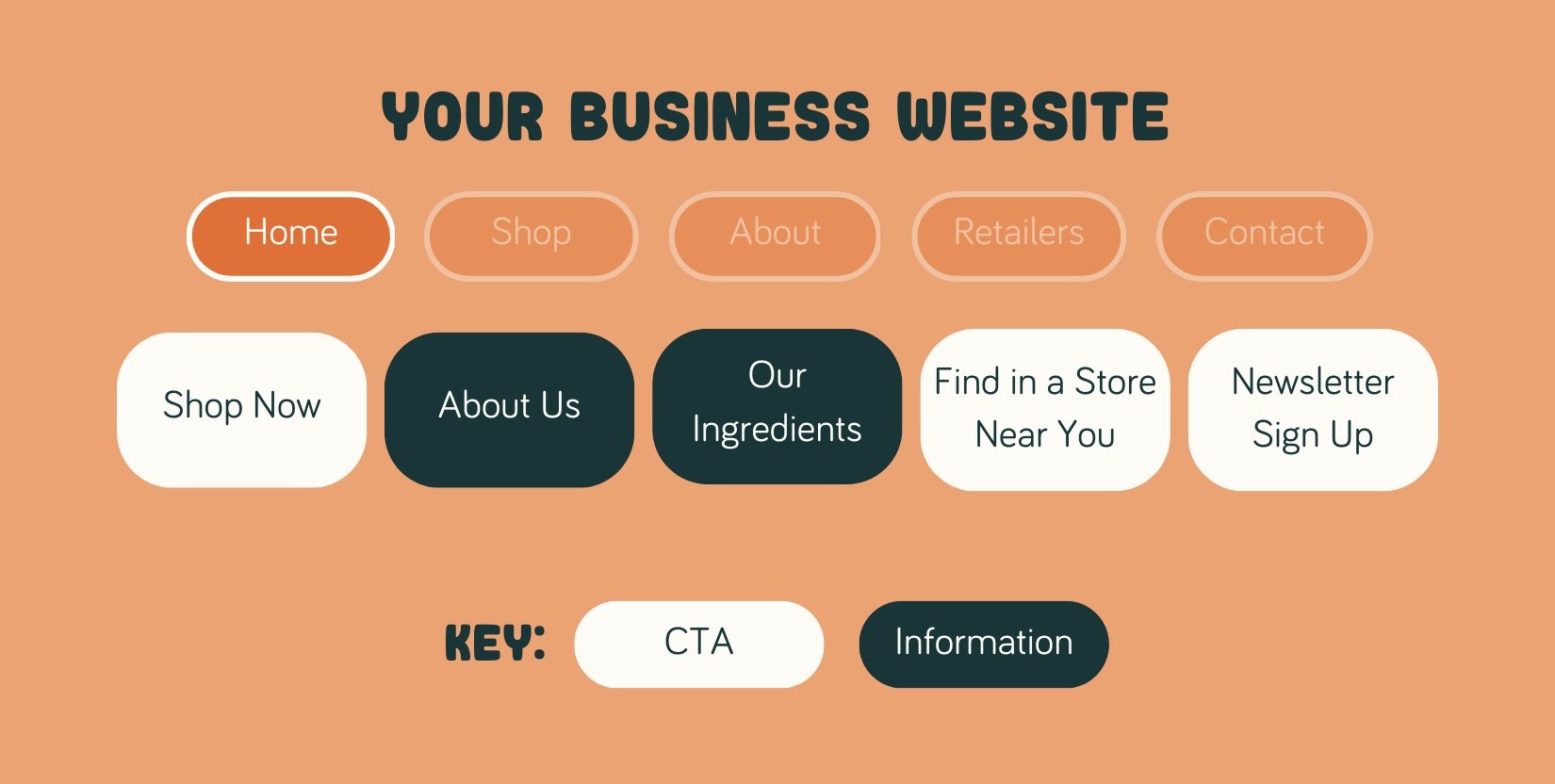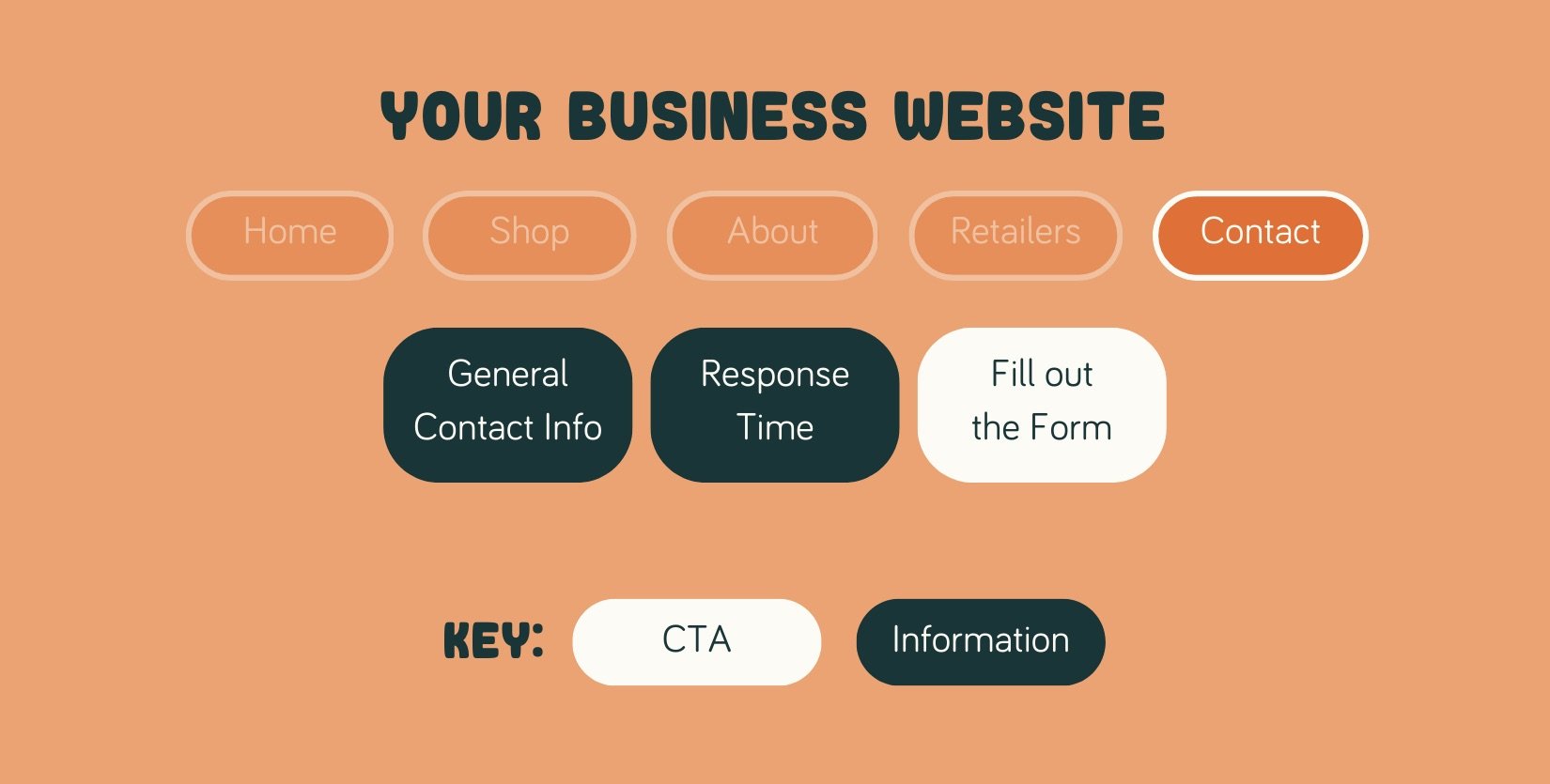Avoiding Overwhelm When Making a Website: What to Include & Why
Charcuterie spread from Modern Maison.
Whether you already have a website for your business or are just beginning, it’s easy to get lost in the recommendations for content, hosting platforms, outsourcing or making it yourself, design, and the list goes on!
There are many things to consider when creating a website that accurately reflects your brand and values, shows off your products and services, and is user-friendly to your customers. Let’s walk through the basics of what should be on your website and why, including page suggestions, content recommendations, and other tips to successfully represent your brand!
Making a site plan and building out your navigation.
Your number one priority when making your website should be providing clear, concise information in a manner that is easy to digest for the reader. Organizing content on appropriately named pages will make visitors to your site more likely to trust you, and therefore more likely to purchase from you.
This is where your navigation menu comes in. Studies show that users spend an average of 6 seconds reading website navigation menus, which is a long time in the world of websites! Make sure yours is tidy and straightforward, so users know where to go for information.
An example Navigation menu. Each name is simple, and it’s easy to guess what information you’ll find when you click on the page.
When developing your website, it's helpful to organize the structure with a clear plan for your navigation menu and the information for each page. They should contain a combination of information, photography, and calls to action (CTAs) that direct users to take action. Keep reading for details!
The top four essential pages for your website.
Home Page
Websites don’t exist without a home page! The goal of your home page is to present a high-level overview of your business. This is your first opportunity to win over a new customer, so put your best foot forward and include your most stunning photos and most necessary, compelling information.
Use buttons and links to provide opportunities for users to engage with your site, whether it’s guiding them to an internal page, directing them to your online store, or encouraging them to sign up for your newsletter.
The home page likely includes the most sections compared to any other webpages and multiple CTAs. Make sure your priority CTA is at the top of the page, and arrange them in descending order of importance.
About Page
About pages are highly-visited pages and are the perfect opportunity to show your worth, explain your values, and share your story. Letting site visitors get to know the people behind the scenes is a great place to start when building a lasting relationship. More on that later!
Use your About page to connect with your audience over shared interests and values. Encourage personal interactions by including a CTA to get in touch.
Products and/or Services Page
The goal of a business is to solve a problem for its customers by providing a product or a service, so make sure what you’re offering is clear! And providing a means to purchase the produce or service is essential. Even if you don’t have eCommerce capabilities on your site, explain how customers can patronize your business.
Contact Page
Make your business accessible to existing and potential customers. If they have questions, you should be reachable to squash any concerns and remove barriers to their purchase. Encourage users to fill out a contact form, and let them know how long it will take you to return their message. People love to know what happens next!
Pro Tip: Using a contact form instead of publishing your email address may lead to less spam in your inbox!
Share contact information most relevant to your business; if you have physical locations, make sure the addresses are easy to find. Most importantly, double-check to ensure your contact form is connected to your email to receive your messages!
Other great optional pages for an impactful website.
Not all businesses are the same, so not all websites should be the same! While the pages listed above are relevant to every business, explore some options below to customize your site to your needs.
Shop
With 24% of retail sales expected to be online by 2026, providing a way for your customers to shop online is a great opportunity to increase convenience. There are eCommerce options for just about any type of product, whether yours is shelf-stable and can be shipped, you’re a farmer selling fresh produce, or a restaurant that offers takeout.
Ready to grow your eCommerce sales? Check out this free download!
Blog
Providing value to your customers is key, and blogs are effective in doing that while simultaneously boosting search engine optimization (SEO) and making your website more likely to be found. Use a blog to share resources your customers will benefit from, explain your services further, and prove your trustworthiness. Keep in mind that consistency is key; if you commit to writing a blog, make sure you follow a schedule and post regularly, even if it's only once a month.
FAQ
Think about the questions you’re asked most frequently, and compile them on a webpage! This will save you time by reducing the number of emails you receive with the same questions, and it shows you’ve put thought into your business and meeting your customers’ needs.
How to fill each page on your site with information your customers want to read.
The written content on your website plays an important role in helping users understand your business offerings and informing search engines about your core identity, ensuring your business visibility in search results. When crafting website content, clarity regarding your products or services, their availability, and what sets you apart from competitors is key.
Call consumers to action.
It's crucial to incorporate effective calls to action (CTAs) on your website, motivating a potential customer to take the desired next step whether that be "Shop Now," "Sign Up," or "Learn More." Draw attention to the action with a prominent button and consider including CTAs on each page of your website (not just the homepage).
Include compelling headlines.
Use your headlines to catch the attention of your audience. Write with the assumption that people won’t read your entire webpage, and put the most important information at the top.
Headlines are a great place to incorporate keywords to boost your SEO. Do some research and make a list of keywords your customers are likely to use to search for a business like yours and include them in your headlines. However, don’t sacrifice your message just to pack it with keywords; Google is now prioritizing valuable content over keyword-stuffed websites.
Show off with flattering photography.
Use high-quality images that showcase you, your products, your growing space, your kitchen, or whatever behind-the-scenes shots that help to paint the whole picture of your business.
Does it get more appealing than this!?
This photo from Modern Maison Co. is a great example of photography making products look irresistable.
Tell your story.
Your About page is a place to share how your life experience makes you the best person to meet their needs, and to connect with readers over shared values and principles. Don’t be afraid to share some personal details so your audience can get to know you. Once they do, they’ll love you!
Provide opportunities for connection.
Encourage your readers to get in touch! Do this with a prominent “Contact Us” button, and several links to your Contact page throughout your website.
Using these tips will help you connect with your existing and potential customers in a meaningful way. There’s always room for improvement, so revisit your website frequently to update language, check links, and add new pages if needed.
For more tips on building customer loyalty, take a listen to this webinar!
Get support optimizing your website.
Hopefully, you’re feeling more confident about building your website or editing it to maximize its power. If you’re still feeling lost, Taste the Local Difference can help!
Website building is one of our specialties, and we love to help our clients build sites that provide the best customer experience and perfectly represent you and your brand. Get in touch below to explore website opportunities.







